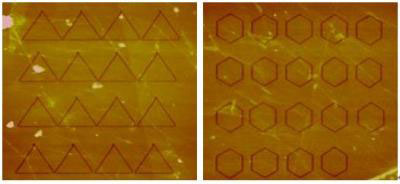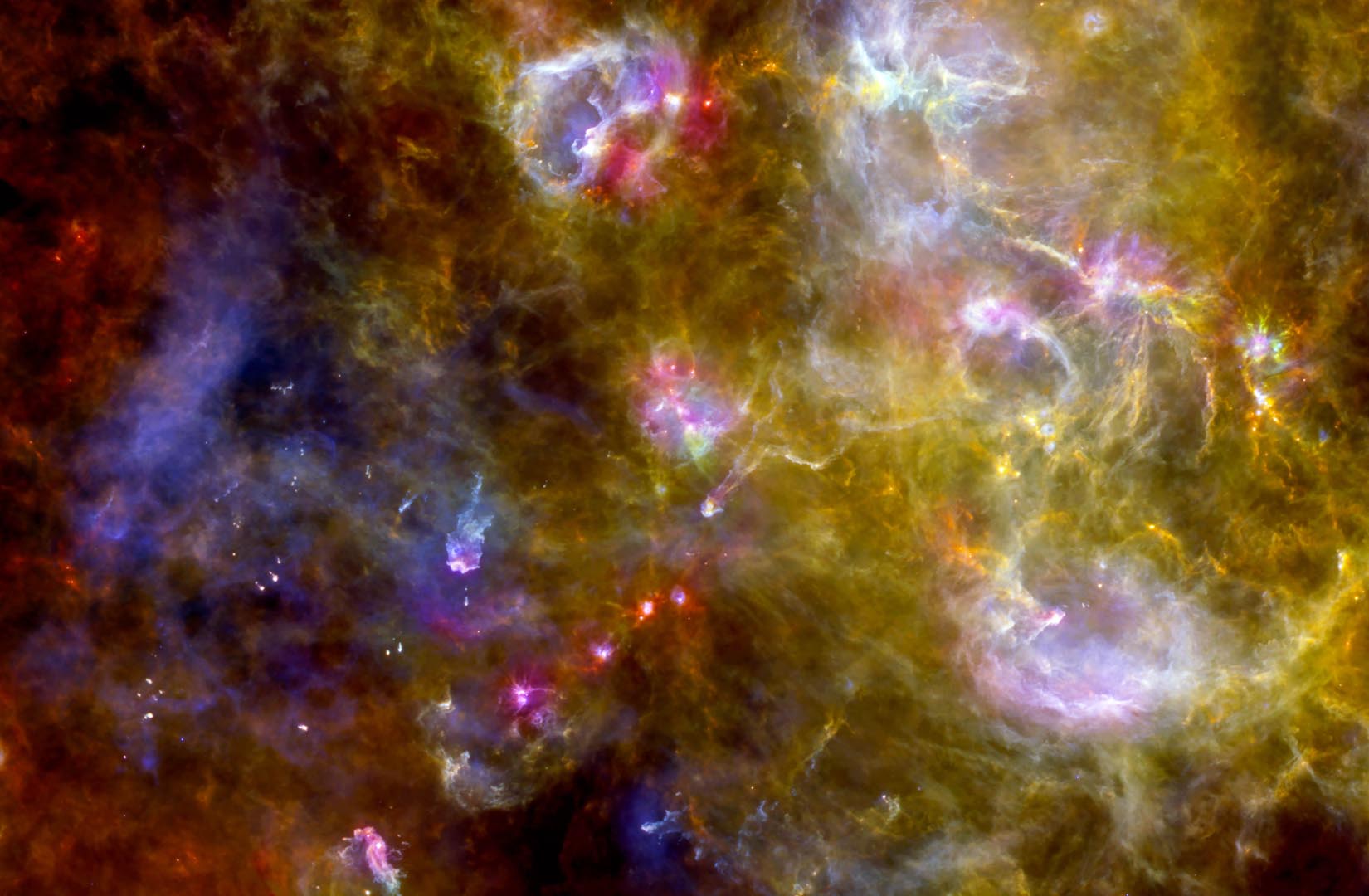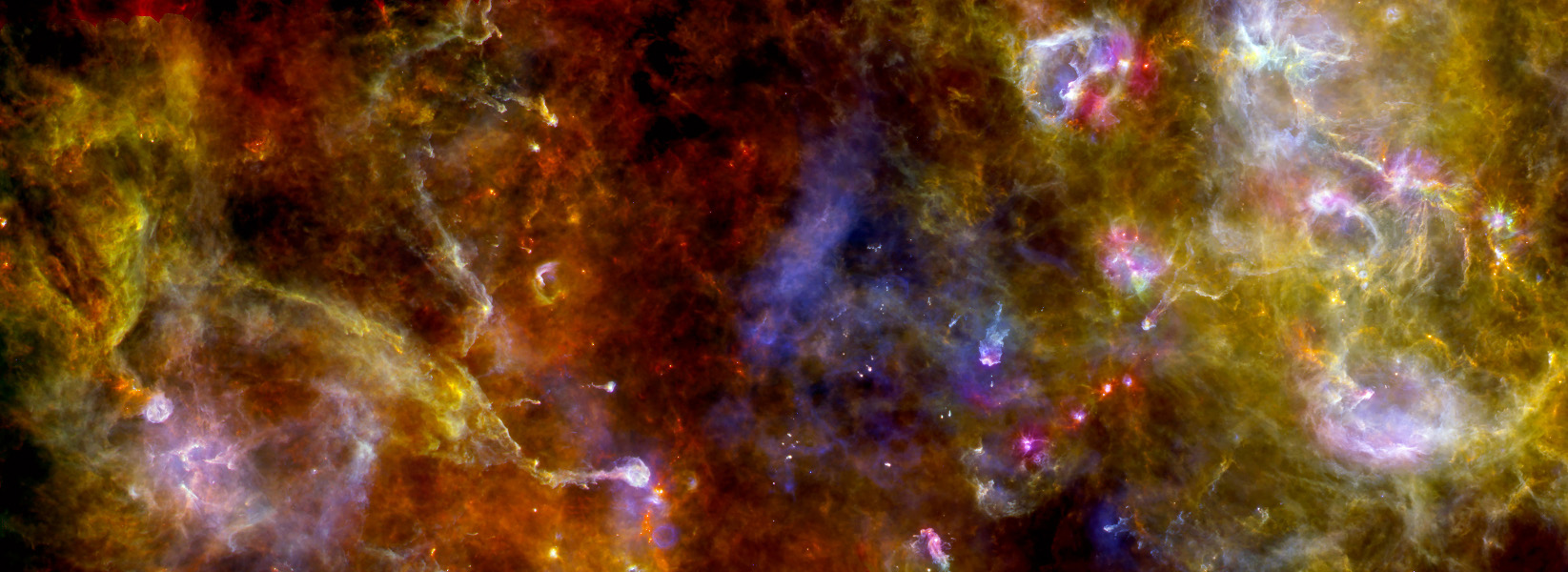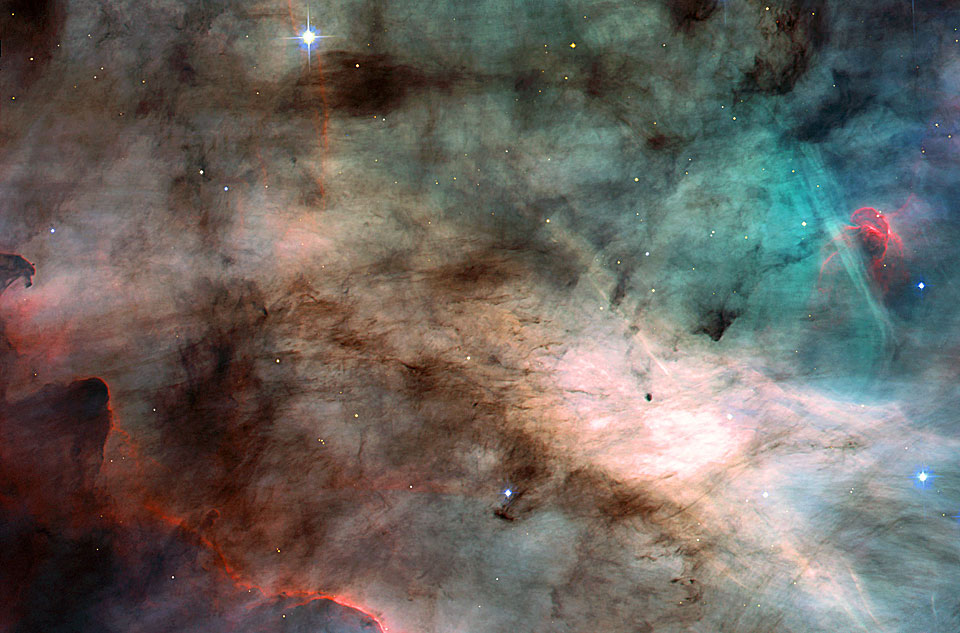
Tuesday, May 29, 2012
Monday, May 28, 2012
youtube for the day/ Science and Islam
I've noticed this over the last couple of weeks; i just watched all three episodes over the last two days; i hope to watch it a few more times before commenting. It is part trying to make Islam interesting to the modern world after the whole terrorist stuff; but, the majority is pretty good in terms of showing the scientific history of the Arabic cultures during the Medieval period; while Christian europe was in a dark ages(yes, they were; they had to rediscover Euclid's Elements, Apollonius Conics, the collective works of Archimedes, Diophantus, Ptolemies Almegest and so on and so forth; hence, they went through a dark ages). It gets better as it goes. At the end, he says some stuff I thought was interesting which I just want to go over through my mind somemore before trying to put my thoughts down on paper.
---------------------------------------------------------------------------------------------------------------------
Jim Al-Khalili argues that the Muslims decoded the Egyptian language long before the Rosetta stone. Whether they did or not matters little in my opinion. The effort to translate as much knowledge of all surrounding cultures interests me more. The Greeks also went around taking in all the surrounding cultures knowledge - both mathematics and mythology. I've argued on this blog that this mixing of mathematics and mythology led to christianity. Mathematics sticks to facts and logic, or what can be proved under certain axioms. Mythology tends to evade the issue - sometimes by refusing to look through the telescope figuratively speaking! Dictators tend to use mythology to say they get to rule by divine right. This series tends to avoid the fact that early Muslims destroyed the last remnants of the Library of Alexandria around 600 A.D. Mythology tends to not want to progress when new facts and logic comes to the attention(even despite the episode 1 above having a Phd saying Islam does, or did). The facts of the downfall of Islam after like 1200 is not crystal clear. Jim doesn't mention anything of what happened in Andalucia. He does say something interesting though. He says that when printing came, the Arab language had to many symbols; so, English, French, German and other languages which could fit the printing press progressed in science much more than the Arab world. However this may be, Arabian science, mathematics stopped progressing far earlier than the 1400s.
There's more to be said about the analogies between the Greeks and the medieval Arabian culture. But, I want to point out another analogy between the Arabs of the Medieval period - a comparison t the Byzantines. The Byzantine's, after their initial building projects in the 500s, stopped doing anything. About all that was interesting was argueing over iconography and warfare. During this time, the Arabian culture was doing all the mathematical progress.
This is one picture of the inside of the Hagia Sophia. No picture can take it all in! Before you go in, there's doors that are like out of a Lord of the Rings movie; i really need to find a picture of these doors!
I found some pictures of the doors going into the main Hagia Sophia room. The Byzantine's also had these great aqueducts leading to cisterns; underground water reservoirs held up by underground rooms of arches.
Once again, after these aqueducts, cisterns, and the Hagia Sopha was built like around 500 A.d, that was it; the empire did nothing architecturally or scientifically; Islam was the only real shining light of the Medieval period(Venice actually didn't do too bad; but, as Jim in the video shows episode 3, Venice and Islam had commerce and trade with one another during this time).
I would argue that the mystics and mythologists grow jealous of mathematics and start rationalizing why they are superior to the mathematics that cann't solve everything in one go. Because the mythological mysticism is easier to comprehend(you don't really have to even comprehend it most of the time; most churches just say, if you pay us, you can come in and believe anything you want), they get more people; more people, more money, more power.
I've seen many different accounts of the decline of Medieval Arabian culture; nobody seems to know what happened. I'm not sure that Jim's explanation of the printing press making Islamic language obsolete adds up to why they stopped progressing. I'd go back to the Greek comparison. The Greeks had a great idea of deductive logic and geometric algebra. Once they had done their thing, they were done. Similarly, some Arabian intellectuals hit on symbolic algebra; once they had done that work about as far as they could, they were done.
I'd like to bring up that 99% of people born in a given culture end up believing and speaking that cultures language and thought. Few people criticize and think; if your born in a christian culture, your a christian; if you're born in a Arab culture, you're a Muslim; if you're born in an Oriental culture, you're a Buddha, or Taoism, or Hindu. Some cultures are better at experiment; some in theory. Ideas get tranlated back and forth; what one culture couldn't do, the other does eventually.
astro picture for the day
ESA/NASA Hubble Space Telescope image . . . of the bipolar outflow of a star just starting to be born; this is actually one of Hubble's first images; there's still no new Hubble pictures much better of this stellar beginning. I saw it brought up again today; so, I decided to go ahead and post it!
Sunday, May 27, 2012
youtube/thought for the day; nanoera coming fast; industrial era about to be obsolete and recycled!
I don't think I posted these; there's like seven more coming before the end of the year! They're kindof fun(the eso youtubes above). ESO has done great stuff down there. One should recall some telescope history. I'm sure I could use some review; but, I can recall some points.
Galileo turned the recent magnifying lens of a north europe person to make the first astronomical telescope. He made a few ever more powerful telescopes as well; so, one should not imagine that he just took what was given to him and pointed up at the night sky. The Galilean discoveries hopefully don't need to be recalled here.
Isaac Newton invented the reflector telescope as oppossed to the Galilean refractor. These two types would compete back and forth till the twentieth century Mount Wilson and Palomar reflectors. But, that's getting ahead of the story a little bit.
William Herschel in the 1700s made a do believe a reflector. He actually deduced infrared radiation, or some kind of energy(he didn't know what it was). I need to look that up. I don't think his reflectors were aluminized or had any kind of top reflective material.
In the 1800s, the parallax of stars was measured by telescope for the first time. Spectroscopy developed in the 1800s which allowed Helium to be discovered on the surface of the sun in 1868 before it was discovered on Earth first.
And of course, the reflector telescopes pretty much ended the refractor telescopes life in the 1900s. Or did it! Cloaking technology is one of the hottest fields of research today. It could help to make perfect optics; well, maybe they'll only be used on microscopes. When the Palomar telescope was built, they thought they'd reached the limit of size there. But a bunch of design innovations has allowed astronomers to bury the Palomar telescope; even today, the Palomar telescope is an antique! The ESO has been a major partipator in making the Palomar telescope obsolete. There was others, like the twin kecks, but because of Hawaiian religion, the Twin Kecks were not able to reach their potention; to make the Hubble space telescope obsolete.
What could be remarkable in all this is that the ESO four telescope optical interferometer(radio astronomy innovated combining the light/radiowavelength of several dishs into one; i remember astronomers saying optical interferometry was impossible; but, through theoretical/mathematical breakthroughs, we live in optical interferometric astronomical telescopes era!) can become obsolete faster than ESO thinks! A new company "Space Resources" who plan to mine the materials of asteroids plans on building a hugh space optical interferometer; we're talking about hundreds of space telescopes spread miles apart. Talk about making the Palomar telescope obsolete! The Russians as reported here already have made astronomy 'astronomical' with their spacebased radio interferometer with a diameter almost to the moon! They're making progress.
Gravity wave astronomy should be mentioned in the light of space based astronomical observatories. Astronomers have built and improved ground/earth gravity meters; but, even if they detect one, plans for a spacebased gravity meter will almost certainly dwarf anything possible here on Earth!
If the astronomical possibilities of the near future isn't enough, nanotechnology just keeps on progressing! Today, i saw reported automated precise stm patterning of graphene(one atom thick pieces of graphite; hence, they are already nanotechnology and on the atomic scale). I've also seen a week or so ago that graphene piezos have been successfully made; they were used to make kinetic energy devices; just wear these devices and your movement alone generates electricity. So, piezo graphene works. I'd expect Nano-Stm's based on these graphene piezos sooner than later. With those and this ability to automate the manufacture of precisely cut(by stms) graphene, graphene nanotechnology should take off in a big way.
The above picture are just some( probably) pictures of graphene(single atom thick materials) cut to precise automatic specifications by an Stms. Build a nano-Stms(the Stm that did this was not a nano-Stm), make chips of millions of Nano-Stm's cutting graphene nanoparts, are we can have nano-manufacturing happening sooner than later!
At the current pace of nanotechnology, Space Resources could have more competition than they may have thought!(not to mention spacex and everybody else). In fact, all today's most advanced technologies can be made obsolete in a few years time of whenever nano-Stm's get made. Just this past week there was also reported scalable photon quantum computers(they make quantum computers out everything, ions, quantum dots, superconductivity; they all have their advantages and disadvantages; in fact, some were trying to combine them all together to keep the good and negate the bad with some progress). Quantum computers could make nanomanufacturing look like animal powered mills.
Needless to say, there was also recent dna-nanotechnology reported; within the day of the article being reported, they took it down! The article is still up in their personal websites; so, i don't think it was because a flaw was found; it was because somebody decided that pathway to effective nanomanufacturing looks promising!(I'll admit, i'm biased!) But, I'm not lying about an interesting dna-nanomanufacturing article being posted yesterday or the day before and it being taken down!
Friday, May 25, 2012
Thursday, May 24, 2012
thought for the day/ the generation problem(s)
For Humanity, there's a new generation(minus overlapping growths) every fifteen to twenty years(when a human being becomes fully capable mentally). Problem? Well, there wasn't much of a problem two or three generations ago; but, today, the information is so large, each new generation cuts off what it needs to learn. In some sense, they abstract, for good or bad, the amount of information they need to survive or get the job done.
One of those learned men that I feel has been abstracted out is Jacob Bronowski and even James Burke.
Mathematics and mathematicians have a trick to deal with information overload; they sum them up in vast generalizations as theorems. Mathematicians argue each generation whether learning mathematics through axiomatics or much thicker, more concrete tombs gets the point across; they end up writing both.
Non-mathematicians tend to just learn the tricks of some previous generation; this was the way it was done in the my Navy experience; my generation guys didn't really know electronics; they just learned what often goes wrong and what often seems to be the answer; if something novel happened, they'd guess and guess and guess some more; then, first the chiefs would come in and then the officer pilots would come into the shop wondering if they have competent avionic technictians! Of course, the fault goes to how they trained us to learn electronics for nine months in the first place - non-mathematically; always just rough descriptions; why? Because none of them knew electronics, or could deduce all the principles of electronics(like series, parallel, and series parallel lrc circuits) from Maxwell's equations(it can be done; i'm talking about how Newton deduced Kepler's laws from his inverse square law; or Quantum mechanics can derive the atoms of the periodic table).
Isaac Asimov through his robots, empire, and foundation stories had the best sense of these historical matters. James Burke certainly tries to convey some of it.
James Burke shows how the Astrolabe was used to create precise measuring instruments and then machine tools; he later on shows how the astrolabe turned over created a device for military guys to measure the angle of elevation for their cannons. The point is that the astrolabe could not be created by anyone of them; if civilzation had fallen, and the astrolabe never got learned from generation to generation, they would have had to relearn the night sky; it takes years if not lifetimes - consider trying to learn the night sky when bears and leopards are trying to eat you; also waring with other tribes; then, there's environmental catastrophes . . . ; similarly, the geometry that allowed the astrolabe to come about was dependent on learning astronomy. And the geometry? The mathematics of the astrolobe was that of projection of the hemisphere of the night sky onto a plane(the astrolabe).
Look, at any one point, to learn any one of those things, astronomy, or geometry took the right social conditions to raise someone with the mental/emotional fortitude to think out of the box. Some people can't stand running because they don't like wearing shorts. Likewise, some people don't like thinking because of some social reason; they get fear mongered by people wondering why you're running around with a book or something. Learning is similar to running; when you run, your body learns to run; without preparation, the run is unsuccessfull; similarly for thinking; without the proper preparation, the astronomy isn't learned, the geometry isn't learned, the astrolabe isn't learned, the precise instrumentation for the machine tools cannot be learned. But then, after the machine tools are made, they can teach the next generation to use and make those machine tools without learning the astrolabe, astronomy; the next generation doesn't have to grow up with those experiences; what happens if the problems posed by the use of those machine tools and the steam engine doesnt' get solved? The next generation doesn't know where to begin! They don't have the general perspective. Today, we're a lot more steps beyond those formative stages that allows our push button society to get their money, food, and knowledge.
Further, nano-manufacturing is about to turn the agricultural class structure society on its head. In a nano-manufacturing era, every man can live on his own for free. He doesn't need money to get food. He just needs the skills to know how to ask the right questions, to get his nanomanufacturing system to made the food for him, the medical knowledge to solve his medical problems. They can bootstrap to get themselves out of whatever situation they find themselves in. But, without understanding the true nature of mathematics, they are lost!
Don't think nanomanufacturing is going to happen?
Here, we have molecules brought together to make functional molecule assemblies. It was done using stms(scanning tunneling microscopes) and in this case rna tips. Nanomanufacturing engineers should be able to make fast progress now!
One of those learned men that I feel has been abstracted out is Jacob Bronowski and even James Burke.
Mathematics and mathematicians have a trick to deal with information overload; they sum them up in vast generalizations as theorems. Mathematicians argue each generation whether learning mathematics through axiomatics or much thicker, more concrete tombs gets the point across; they end up writing both.
Non-mathematicians tend to just learn the tricks of some previous generation; this was the way it was done in the my Navy experience; my generation guys didn't really know electronics; they just learned what often goes wrong and what often seems to be the answer; if something novel happened, they'd guess and guess and guess some more; then, first the chiefs would come in and then the officer pilots would come into the shop wondering if they have competent avionic technictians! Of course, the fault goes to how they trained us to learn electronics for nine months in the first place - non-mathematically; always just rough descriptions; why? Because none of them knew electronics, or could deduce all the principles of electronics(like series, parallel, and series parallel lrc circuits) from Maxwell's equations(it can be done; i'm talking about how Newton deduced Kepler's laws from his inverse square law; or Quantum mechanics can derive the atoms of the periodic table).
Isaac Asimov through his robots, empire, and foundation stories had the best sense of these historical matters. James Burke certainly tries to convey some of it.
James Burke shows how the Astrolabe was used to create precise measuring instruments and then machine tools; he later on shows how the astrolabe turned over created a device for military guys to measure the angle of elevation for their cannons. The point is that the astrolabe could not be created by anyone of them; if civilzation had fallen, and the astrolabe never got learned from generation to generation, they would have had to relearn the night sky; it takes years if not lifetimes - consider trying to learn the night sky when bears and leopards are trying to eat you; also waring with other tribes; then, there's environmental catastrophes . . . ; similarly, the geometry that allowed the astrolabe to come about was dependent on learning astronomy. And the geometry? The mathematics of the astrolobe was that of projection of the hemisphere of the night sky onto a plane(the astrolabe).
Look, at any one point, to learn any one of those things, astronomy, or geometry took the right social conditions to raise someone with the mental/emotional fortitude to think out of the box. Some people can't stand running because they don't like wearing shorts. Likewise, some people don't like thinking because of some social reason; they get fear mongered by people wondering why you're running around with a book or something. Learning is similar to running; when you run, your body learns to run; without preparation, the run is unsuccessfull; similarly for thinking; without the proper preparation, the astronomy isn't learned, the geometry isn't learned, the astrolabe isn't learned, the precise instrumentation for the machine tools cannot be learned. But then, after the machine tools are made, they can teach the next generation to use and make those machine tools without learning the astrolabe, astronomy; the next generation doesn't have to grow up with those experiences; what happens if the problems posed by the use of those machine tools and the steam engine doesnt' get solved? The next generation doesn't know where to begin! They don't have the general perspective. Today, we're a lot more steps beyond those formative stages that allows our push button society to get their money, food, and knowledge.
Further, nano-manufacturing is about to turn the agricultural class structure society on its head. In a nano-manufacturing era, every man can live on his own for free. He doesn't need money to get food. He just needs the skills to know how to ask the right questions, to get his nanomanufacturing system to made the food for him, the medical knowledge to solve his medical problems. They can bootstrap to get themselves out of whatever situation they find themselves in. But, without understanding the true nature of mathematics, they are lost!
Don't think nanomanufacturing is going to happen?
Here, we have molecules brought together to make functional molecule assemblies. It was done using stms(scanning tunneling microscopes) and in this case rna tips. Nanomanufacturing engineers should be able to make fast progress now!
Sunday, May 20, 2012
youtube for the day/ Arthur C Clarke's account of Fractals
Fractals are still,in my opinion, mere mathematical curiosities. I have some thoughts about it; but, I'd like to keep them to myself for now, sorry. One thing that is kind of thought of already is that the computer ironically might allow humanity to deal with complexity.
Anti-scientists have long tried to deny the computer by saying it can only deal with the simple; well, fractals seem to suggest quite otherwise. Anti-scientists had likewise long argued this or that about science when science and mathematics had long ago gone far beyond. For instance, anti-scientists are still argueing about Newtonian mechanistic viewpoint of nature even when mathematical science had gone far beyond in quantum mechanics and Einstein's relativity theories.
One could go much further and say the concept of god is always an effort to go beyond what humans can know; at first, everything in nature was a god; wind, water, life, sungods. Then, as mathematics started happening, they moved god to the sky and stars, then infinity(George Cantor in the 1800s found in his transfinite numbers different sized infinities; so, what size infinity is your god?), then higher dimensions, then faith and the banning of reason all together; that's what god ultimately becomes; a vague statement that can prove everything without explaining anything(Kurt Godel, in 1931 published his incompleteness theorems of symbolic logic; a finite set of axioms, if consistent, cannot prove an infinity of truths; but, if that finite set of axioms is vague and inconsistent, then it can prove an infinity of truths! God is this latter concept, a vague inconsistent concept that can prove everything without explaining anything!).
When I show my gospel of truth(first post of this blog) to god believers, they always reference 1corinthians1 which not only has Paul saying the Greeks effort to concieve of the universe is foolish, but that we should chose the weak over the wise. Ignorance is graceful for christians(and Paul, or is it Apollos?).
One should further note that the Jews and Christians banned idol worship and making pictures and sculptures of their gods; why? Because then one could point to it and say, it's just a piece of artwork. Of course, they still had to write down their ideas of god to communicate and convert others to their religon; it amounts to the same thing as making a sculpture of your god. Really, banning idol worship forfeits the arguement!(of the existence of jesus christ)
----------------------------------------------------------------------------------------------------------
I forgot to mention a curious analogy between Arthur C. Clarke and Isaac Asimov. Both chose mathematics as something of fundamental importance. Arthur C. Clarke here with his fractals show and his last novel(which I havn't read) called Fermat's last problem. With his "Against the fall of night" one could argue that he was trying to say that despite a societies best efforts to turn away from the universe, someone, somewhere, breaks free from the social bonds.
Isaac Asimov of course has his Foundation "Harry Seldon" mathematician character. Also, in his first foundation book, Isaac Asimov's characters use symbolic logic to get to grips with what a tyrant is really saying or did not say.
Saturday, May 19, 2012
Wednesday, May 16, 2012
youtube for the day/ James Burke Apollo program show
I figured if I'm going to have a bunch of James Burke and Apollo program shows on this blog, let's put the show that combines them both!
-Was the Apollo and space program stopped because of cost? Well, considering people spent more money on smoking; well, there's little excuse.
ope, and then, in the end of the above program, he says there's a part two; a quick look around, and I found it!
Apollo 1 fire, sep11, . . . failure of imagination; a failure to be scientific.
astro picture for the day
Herschel Space Telescope(this infrared space telescope is positioned at a lagrange point). The image above is actually just a piece of a larger image; i wasn't able to make the urls work to put that image up;
someone put this picture up;
Herschel Space telescope image
Tuesday, May 15, 2012
thought for the day/ James Burke connections and spinoff technology
Faraday was once asked from some woman what use is electricity; Faraday is known to have said "of what use is a baby." Of course, babies and electricity have their uses.
-------------------------------------------------------------------------
In my previous post, I pointed out that despite James Burke's best efforts to complexify the history science and humanity, it's really not so complicated or that much. The more you look at it, despite all the details, after awhile it gets to be not so much. I said this was because our species is actually quite young! Then, I realized an idea of where more connections can be found - spinoff technologies.
After World War II,
and because of this atomic bomb getting the Japanese to lay down without sending in the troops to weed them out,
. . . science budgets really went through the roof. These were justified because they might make death rays,
well, that youtube didn't have OakRidge's particle accelerator; i know they had one working as late as 1990s; in fact they used quantum entanglement in some of their experiments I remember reading about it back then.
Here's the SLAC. The slac discovered the quarks that make up protons; the slac also created matter out of pure energy around 1997. Today, the slac is turned into a giant light source to picture chemical reactions and do other such experiments.
And then, of course, there's the Saturn V rocket!
They like to joke that amongst the spinoff technology of the Apollo program was tang drinks. Other spinoff technology was the microwaves, pacemakers.
Before World War II, science was done on shoestring budgets at best. Universities did the majority of the funding. Well, there was the industrial barrons of the late 1800s who helped build the great refractor and then reflector observatories,
Generally speaking, it was pretty hard to get science funding if it wasn't military. Today's space probes to the various planets are justified on both the spinoffs for commercial and military technology because of World War II.
Perhaps some more curiosities of spinoff technologies that have gone on since world war II was Ferdinand Porsche's idea of auto-racing used to speed up technological development.
I used to love IMSA GTP racing and Formula 1; but not so much anymore. Those glory years are gone; the romantic era for motor racing is long gone; they ban any technological innovation. I fear the romantic era for science is also fast going away. They don't want everyone to have their own nanomanufacturing system; they want to confine all humanity on earth to do so. I see "Logan's Run" coming; well, nothing lasts forever!
-------------------------------------------------------------------------
In my previous post, I pointed out that despite James Burke's best efforts to complexify the history science and humanity, it's really not so complicated or that much. The more you look at it, despite all the details, after awhile it gets to be not so much. I said this was because our species is actually quite young! Then, I realized an idea of where more connections can be found - spinoff technologies.
After World War II,
and because of this atomic bomb getting the Japanese to lay down without sending in the troops to weed them out,
. . . science budgets really went through the roof. These were justified because they might make death rays,
well, that youtube didn't have OakRidge's particle accelerator; i know they had one working as late as 1990s; in fact they used quantum entanglement in some of their experiments I remember reading about it back then.
Here's the SLAC. The slac discovered the quarks that make up protons; the slac also created matter out of pure energy around 1997. Today, the slac is turned into a giant light source to picture chemical reactions and do other such experiments.
And then, of course, there's the Saturn V rocket!
They like to joke that amongst the spinoff technology of the Apollo program was tang drinks. Other spinoff technology was the microwaves, pacemakers.
Before World War II, science was done on shoestring budgets at best. Universities did the majority of the funding. Well, there was the industrial barrons of the late 1800s who helped build the great refractor and then reflector observatories,
Generally speaking, it was pretty hard to get science funding if it wasn't military. Today's space probes to the various planets are justified on both the spinoffs for commercial and military technology because of World War II.
Perhaps some more curiosities of spinoff technologies that have gone on since world war II was Ferdinand Porsche's idea of auto-racing used to speed up technological development.
I used to love IMSA GTP racing and Formula 1; but not so much anymore. Those glory years are gone; the romantic era for motor racing is long gone; they ban any technological innovation. I fear the romantic era for science is also fast going away. They don't want everyone to have their own nanomanufacturing system; they want to confine all humanity on earth to do so. I see "Logan's Run" coming; well, nothing lasts forever!
Sunday, May 13, 2012
thought for the day/our young species
I've shown the connections between James Burke's "Connections"(and "the Day the Universe Changed") and Jacob Bronowski's last thoughts about the nature and origin of all knowledge(in his Origin of Knowledge and Imagination).
As perhaps my readers know, while James Burke tries to complicate things, it's really not so complicated(with some qualifications, like the Babylonian and some Egyptian mathematics, the Greeks started the mathematical exploration of the universe; the city of Alexandria housed on the worlds knowledge; it was burned down for various reasons, dark ages, and then Renaissance, with some qualifications there; this is the major pattern of western civilization with some influence from the Eastern. Then, the connections between various mathematics and science/technology from the Greek times to todays.). And so, after showing the connections, my blog bogged down a little.
The fact that I havn't been able to say much more(and likewise James Burke's history of science and technology) shows one thing; humanity is a young species. There's things to be said right there; The line from us to the apes goes back four plus million years; it's all quite hard to believe that for instance tens of thousands of years went by without much more going on than the cave paintings; but, then again, Humanity is a young species. Maybe we'll find new archaeology of the last tens of thousands of years(there has been some recent findings that pushes technology back, and even I've posted about some stuff suggesting Homo Erectus boating hundreds of thousands of years ago!).
People before the steam engine thought they were smart and maybe even nice/mature people. But, really, they were only mildly more sophisticated than the cave painters. It's only with the steam engine that civilization(regardless of the people) became much more than the cave painters. But! Those who did logical proof had taken a step above those who could/would not think factually/logically. And, that goes for those who created new mathematics. The difference between the Pyramid builders and the Neolithic stonehenge builders was a mathematical one. Likewise, the difference between the stonehenge builders and the cave painters was a mathematical one. The difference between the Greeks and the Egyptians and the Babylonians was deductive proof. Of course, only a small percentage of people took that step; it's always been a fight between those who want to progress and those who don't. This fact alone perhaps shows the problems of why humanity has had long stretches of not progressing. Of why we would think of say that the reason why there isn't much more stories of connections for a james burke is because we're such a young species, even if we're not!
But, for the mathematician, except for a dark ages here and there, there is so many connections that can be talked about! In the 1700s, mathematicians had created enough differential equations knowledge to dwarf all of Greek mathematics; differential equations has of course continued to advance either because of itself or because of new mathematical developments; they've generalized galois theory for differential equations; they've generalized differential equations because of lie theory. Then in the 1800s, mathematics went 'abstract.' Non-euclidean geometries and abstract algebras were discovered; they could make up alternative geometries and algebras. In the late 1800s, topology was established and we've been in the topology era ever since really. If you look at the 1900s history of mathematics books, they always stop short around early 1930s or so; they might try to make a few remarks about later work, but, it seems that the amount of mathematics created in the twentieth century has been to much for anybody to really get a hold of it; some people have tried to give histories of mathematics according to say 'solving of the Hilbert problems" or the mathematics of the fields medals; either one reveals details the other doesn't shed light on. I've yet to see a Eric Temple Bell, or a Morris Kline give the definitive history of 20th century mathematics. I remember seeing a book from an early 1900s mathematicians who wrote the history of determinants; it goes to five thousand pages! As far as I can tell, the recent solving of the Poincare conjecture leaves mathematicians baffled of the meaning of it all; they say they're not sure if the fruits of it will be understood a century hence. I would argue the meaning of fractals and transcendental numbers is still not understood(there's been a recent breakthrough in fractals and permutation of numbers); George Cantor in the 1800s showed that the rational numbers and the integers are the same size infinity; but, the real numbers are larger size infinity!(what size infinity is your god?). The transcendental numbers are an even larger size infinity! Yet, we only use two transcendental numbers; Pi and the e constant. I'm starting to wander in all this!
Needless to say(if we destroy ourselves before establishing ourselves in space; hence securing the species probably forever), our species is young and may die young. This goes into the whole Extraterrestrial civilizations topic. Perhaps this dawning reality will go the furthest to get humanity over it's past irrationalities than anything else. I'm leaving without addressing all the issues like "Fermi's question", should we or shouldn't we contact or give our positions away to Extraterrestrial intelligences, and so on.
As perhaps my readers know, while James Burke tries to complicate things, it's really not so complicated(with some qualifications, like the Babylonian and some Egyptian mathematics, the Greeks started the mathematical exploration of the universe; the city of Alexandria housed on the worlds knowledge; it was burned down for various reasons, dark ages, and then Renaissance, with some qualifications there; this is the major pattern of western civilization with some influence from the Eastern. Then, the connections between various mathematics and science/technology from the Greek times to todays.). And so, after showing the connections, my blog bogged down a little.
The fact that I havn't been able to say much more(and likewise James Burke's history of science and technology) shows one thing; humanity is a young species. There's things to be said right there; The line from us to the apes goes back four plus million years; it's all quite hard to believe that for instance tens of thousands of years went by without much more going on than the cave paintings; but, then again, Humanity is a young species. Maybe we'll find new archaeology of the last tens of thousands of years(there has been some recent findings that pushes technology back, and even I've posted about some stuff suggesting Homo Erectus boating hundreds of thousands of years ago!).
People before the steam engine thought they were smart and maybe even nice/mature people. But, really, they were only mildly more sophisticated than the cave painters. It's only with the steam engine that civilization(regardless of the people) became much more than the cave painters. But! Those who did logical proof had taken a step above those who could/would not think factually/logically. And, that goes for those who created new mathematics. The difference between the Pyramid builders and the Neolithic stonehenge builders was a mathematical one. Likewise, the difference between the stonehenge builders and the cave painters was a mathematical one. The difference between the Greeks and the Egyptians and the Babylonians was deductive proof. Of course, only a small percentage of people took that step; it's always been a fight between those who want to progress and those who don't. This fact alone perhaps shows the problems of why humanity has had long stretches of not progressing. Of why we would think of say that the reason why there isn't much more stories of connections for a james burke is because we're such a young species, even if we're not!
But, for the mathematician, except for a dark ages here and there, there is so many connections that can be talked about! In the 1700s, mathematicians had created enough differential equations knowledge to dwarf all of Greek mathematics; differential equations has of course continued to advance either because of itself or because of new mathematical developments; they've generalized galois theory for differential equations; they've generalized differential equations because of lie theory. Then in the 1800s, mathematics went 'abstract.' Non-euclidean geometries and abstract algebras were discovered; they could make up alternative geometries and algebras. In the late 1800s, topology was established and we've been in the topology era ever since really. If you look at the 1900s history of mathematics books, they always stop short around early 1930s or so; they might try to make a few remarks about later work, but, it seems that the amount of mathematics created in the twentieth century has been to much for anybody to really get a hold of it; some people have tried to give histories of mathematics according to say 'solving of the Hilbert problems" or the mathematics of the fields medals; either one reveals details the other doesn't shed light on. I've yet to see a Eric Temple Bell, or a Morris Kline give the definitive history of 20th century mathematics. I remember seeing a book from an early 1900s mathematicians who wrote the history of determinants; it goes to five thousand pages! As far as I can tell, the recent solving of the Poincare conjecture leaves mathematicians baffled of the meaning of it all; they say they're not sure if the fruits of it will be understood a century hence. I would argue the meaning of fractals and transcendental numbers is still not understood(there's been a recent breakthrough in fractals and permutation of numbers); George Cantor in the 1800s showed that the rational numbers and the integers are the same size infinity; but, the real numbers are larger size infinity!(what size infinity is your god?). The transcendental numbers are an even larger size infinity! Yet, we only use two transcendental numbers; Pi and the e constant. I'm starting to wander in all this!
Needless to say(if we destroy ourselves before establishing ourselves in space; hence securing the species probably forever), our species is young and may die young. This goes into the whole Extraterrestrial civilizations topic. Perhaps this dawning reality will go the furthest to get humanity over it's past irrationalities than anything else. I'm leaving without addressing all the issues like "Fermi's question", should we or shouldn't we contact or give our positions away to Extraterrestrial intelligences, and so on.
astro picture for the day
ESA/NASA Hubble space telescope
this picture is of a galaxy sixty million light years away; the Andromeda galaxy is two million light years away.
--------------------------------note for the day----------------------------------
Post 4/30/12 about how we think about number has been updated. It's probably still not everything that needs to be said; i feel like I'm forgetting some thoughts about the matter.
Friday, May 11, 2012
picture for the day/ Leonardo Da Vinci vitruvian man
Leonardo Da Vinci lived while the Byzantine empire finally fell and many Greeks who were learning in some backroom and kept it between them and the walls of their homes. This was actually long after Leonardo's formative years. In other words, Leonardo had little to go on. His scientific method was actually drawing these things as a way of writing and noting details.
Let me elaborate a little bit here; when mathematical scientists want to understand something; they want to know it's structural relations and their behaviors; mathematicians do this in a language kind of way; they code up nature in language; Leonardo Da Vinco thought and did this in terms of drawing; drawing was his language skills.
On the other hand, he drew this semi-regular solid!
The wiki mentions some suggestions about his science and technology even I'm in disbelief! Steam cannon(nobody then or now has ever done that except maybe rockets; to bad technology wasn't advanced enough for him to build that!), concentrated solar power, calculator(i can kind of believe this one; to bad he wasn't able to get around to building that!).
Well, I found a picture of Leonardo Da Vinci's computer speculations,
And then of course, there's people who think Leonardo Da Vinci knew of the sungods understanding of Jesus Christ because he either leaves out details, changes details, or introduces weird details in his picture of Jesus christ and the twelve disciples of Jesus christ(the twelve constellations of the zodiac according to the sungods mythology - whether Jesus Christ, or mithras, or Osiris . . . ;)
Wednesday, May 9, 2012
Monday, May 7, 2012
quote of the day
"In the least flattering light, both criticism and abstraction reflect the leaden hue of decadence." - E.T. Bell
Saturday, May 5, 2012
picture for the day/ Bern clock tower
It's my understanding that the patent office that Einstein worked out his special relativty is close by to this clock tower. The clock tower goes back to like 1100 A.D. The clock tower got an astronomical facelift in the 1500s.
Shortly, clock makers in Germany(not to far from switzerland) made 'Nuremberg eggs.'
This according to a wiki article is amongs the first nuremberg eggs; looks nothing what they famously look like,
Here's an interesting Nuremberg Egg,
The point is that after the translations of the Greek classics from Arab spain translations around 1066 a.d, astronomy and clock making was the high science and technology of the day. And, making things smaller seemed to make for advantages than making big clock towers like the Bern clock tower.
Curiously, when the steam engine was shrunk to smaller sizes, the steam engine made itself ever more usefull; the car and the airplane. Perhaps this is suggestive; after a technological breakthrough, make it small and see what that brings. Computers? How about artificial intelligence? I've seen suggestions of micro and nano antenna's that can make photoelectricity and even quantum computers more practical. Of course, the real idea of Richard Feynman/Eric Drexler nanotechnology is to make small nanofactories; what can that do? It can make everything ten to thousands of times better for the price of planting potato seeds.
--------------------------------------------------------------------------------------------------------------
Richard Feynman/Eric Drexler nanotechnology is nanomanufacturing. They want to have the ability to pick up an atom and discreetly place it somewhere else; and then make macroscopic products just like that to atomic specification.
Well, doing this by bacteria is still not quite ideal; but, it is a step! Could one call this actual nanomanufacturing Feynman/Drexler style? Sure! Welcome to the nano era? Sure! Do we have a long ways to go before nanomanufacturing recycles the industrial world and puts us in a bit of a sci-fi world? Yes! But, it will be exciting along the way!
http://onlinelibrary.wiley.com/doi/10.1002/smll.201101627/abstract
this same group also made nanowires to connect and make electronic circuits with bacteria!
http://onlinelibrary.wiley.com/doi/10.1002/smll.201102446/abstract
And, in even more nano news! Some actual working nano piezo's have been created for use in kinetic energy generating devices(just walking around on your shoes could create energy). Now, if they can just create nano-stm's using nano piezos!
astro picture for the day
NASA/Cassini spacecraft picture of a Saturn moon, Helene. This moon is 1) strikingling different looking from many other such moons and asteroids, and 2) positioned at a Saturnian "Lagrange" point. A lagrange point is a stable point, or a balance point with respect to two sufficiently large gravitational bodies. At such a lagrange point, a sufficiently small mass can stay at that point of orbit.
In 1773, Pierre Laplace showed that Jupiter and Saturn periodically(as oppossed to chaotically, or randomly) accellerate and decelerate with respect to one another . . . every 929 years.
I'm not sure when mathematical astronomer's figured out/learned of planets getting phase locked with respect to each other or to the sun. The moon s phase locked to the Earth; you always see the same side of the moon! We never saw the other side of the moon till like 1959 when the Soviet Union launched the first spacecraft to orbit the moon! Venus and Mercury are phase locked to the sun; All thse things, lagrange points, phase locked moons, patterns in the orbits of planets of the solar system; these are not things that one can see; you have to mathematically derive them. People didn't note that the moon never rotates till the mathematical consciousness developed enough; these are just some of the wonders found by celestial mechanics over two hundred years ago!
There were pheonomenon of clocks synchronizing to each others beats(if you hung them on the same wall). All these mechanical marvels and astronomical problems led to much analyses(mathematicians word for calculus and the various generalizations of it).
Thursday, May 3, 2012
quote for the day
"Fables should be taught as fables, myths as myths, and miracles as poetic fanasies. To teach superstitions as truths is a most terrible thing. The child mind accepts and believes them, and only through great pain and perhaps tragedy can he be in after years relieved of them." - Hypatia of Alexandria
I thought I'd reprint the quote in cae the quote picture gets taken down.
Hypatia here clearly shows that she's a rational philosopher. Hypatia is well known to have been murdered in the worst way by christians. The library of Alexandria was subsequently burned down. Christianity was clearly showing their hand - anti science(as I've shown clearly quoting theis 1 corinthians 1 below).
Hypatia was actually made a saint by the growing christian nazy dark ages Europe around 500 B.C. She was called Saint Catherine at the Wheel. If you check out the wiki of Catherine of the wheel, http://en.wikipedia.org/wiki/Catherine_of_Alexandria you'll see that they spin doctored it to say she was a born again christian who was trying to argue for christianity and was murdered by a Pagan king.
Wednesday, May 2, 2012
youtube for the day 1.2!)/ John Romer's findings on the Pyramids
I once again don't recall if I posted these youtubes of John Romer's ideas of how the Pyramids were built. The more I watch it, the more I like it; these are also some of the best youtubes of the Pyramids I've found.
I think I've posted this for another reason. Number one, the video series, secrets of the stone age, was taken down again(so that link on my blog doesn't work again!). Number two, i've posted recently some stuff about Neolithis builders up in Northern europe. Comments I had made on the youtube downloads of "Secrets of the Stone Age" were that of 'what seems to differentiate the ruins of the Maltese, the Stonehenge builders, and so on and the Pyramid builders shortly later, was the mathematical forms of the Pyramids, and their mathematical precise alignments(I would argue the Pyramids are patterned on Orions belt as well).
The next mathematical significant civilization(a culture that you can see the affects of mathematics on their philosophy and architecture) is the Greeks - a full thousand years later; then of course, there was a thousand years or so depending on how you measure things, after the Greeks to the Renaissance which is was a mathematical step above again ultimately leading to the Industrial revolution.
youtube for the day/ John Romer's Seven wonders and Pirro Ligorio and water powered water gardens
I don't recall if I posted episode 4 of James Burke's connections earlier on this blog; but, I found this below recently which is similar to some neat stuff shown by James Burke above.
James Burke, above, points out how during the Renaissance(and really five hundred years earlier with the translations in Arab Spain of Greek classics of mathematics and science; but, due to a black plague, Europe had to go through a second Renaissance . . . the one everyone knows about around 1500; this second Renaissance was also due to the fall of the Byzantine empire[finally] around 1490; the fall of the Byzantine empire around that time also led to the great ocean voyages which led to the discovery of the Americas), Greek classics were getting translated, printed in abundance; one of those was a book about powered mechanical devices(by both water and steam power!) by a Hero of Alexandria(where else?). Europeans made water powered gardens(Arabs had done so before them) with great architecture and sculptures.
I don't know if anybody explored James burke's connections thouroughly enough before to find the German Castle of water powered fun pointed out by James Burke before; so, i provide a close link(you'll have to watch it for a few minutes); but, i found this Pirro Ligorio who put this one up in Rome; John Romer points out some more curiosities of Pirro Ligorro as well! Because I found this like yesterday, I decided to post it and point out the Jame burke stuff as well!
---------------------------------------------------------------------------------------------------------
John Romer's "Seven Wonders" looks like something I'd like to see. I suppose I could buy the vhs tapes; but, I'd prefer to wait for it on dvd.
Anyways, the fact that people considered the seven wonders back in the Greek times is almost as striking as noting that say the cave painters didn't seem to be to concerned with the stars. The word mathematics was also first coined by the Greeks. The Greeks even then considered architectural things to be the great accomplishments of mankind - not mathematics. I'm sure the mathematicians might have raised an arm in protest; but, it doesn't look they had much say. Even today, the history channel shows the history of the great architectures of the past more than anything else(other than waring). They also don't have many shows about the Mesopotamian cultures; perhaps this is because they do not do the history of mathematics, or consider the great mathematical wonders of the past? I think so.
Tuesday, May 1, 2012
astro picture for the day
ESA/NASA Hubble space telescope image of Abel galactic cluster. It looks like one of those recent hubble deep fields. The Hubble deep fields are images of galaxies as they looked pretty close to the beginning of our universe. There's things to be said about that. For hundreds of thousands of years(actually about 400,000 years after the big bang), after the big bang, the universe was interconnected electrodynamicaly. The universe had not cooled down enough for photons to be uncoupled to electrons, and the electrons could not stay in orbit(quantum mechanically) around an atomic nucleus(generally, either hydrogen or helium). Generally speaking, galaxies and even stars could not form for hundreds of thousands of years after the big bang. Then, about 400, 000 years ago, well stars and galaxies could form. Hubble has been able to image what the universe looked like a little after stars and galaxies formed. No other telescope can do that; they are famously called "hubble deep fields." This is not a Hubble deep field!
This is of a Galactic cluster about 400 million light years distant(as oppossed to 12 billion light years for the hubble deep fields). I find that one great feature of Hubble space telescope pictures, or galaxies, is that you see galaxies spiraling off to infinity, in the background(of Hubble space telescope images of galaxies). Here, your seeing much of that affect . . . distant galaxies spiraling off to infinity as the background for the Abel galactic cluster.
Hopefully, you can click on it and it will become a bigger picture and maybe you'll find it kind of fun to peruse for more galaxies; or to even wonder which galaxies are part of the Abel cluster or further distant clusters.
We are not part of the Abel cluster; we're part of the Virgo cluster; we're at the outside edge of it in fact - a good place to be. The galaxies inside the Abel galactic cluster for one are shredding each other apart.
Subscribe to:
Posts (Atom)

.jpg/200px-HagiaSophia_DomeVerticalPano_(pixinn.net).jpg)




















